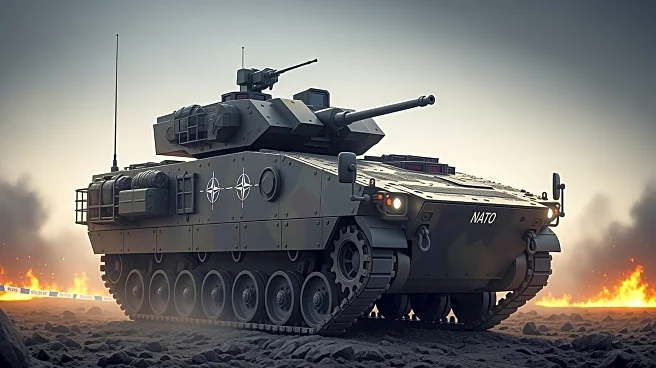What's Happening?
The Organisation for Joint Armament Cooperation (OCCAR) has placed an order for Schakal infantry fighting vehicles (IFVs) for Germany and the Netherlands. The order, made through the Rheinmetall-KNDS joint
venture Artec, includes 150 Schakals for the German Bundeswehr and 72 for the Royal Netherlands Army (RNLA). The total value of the order is EUR3.41 billion (USD3.97 billion), with Rheinmetall receiving nearly EUR3 billion. The contract also includes a logistics package comprising spare parts, training equipment, and special tools, along with options for advanced protection systems. The German Bundestag approved the funding for these vehicles, which are expected to be delivered between 2027 and 2031. The Dutch Ministry of Defence has scheduled deliveries for the fourth quarter of 2028.
Why It's Important?
This procurement is significant as it strengthens the military capabilities of both Germany and the Netherlands, enhancing their roles within NATO. The Schakal IFVs, equipped with advanced weaponry and protection systems, are expected to provide substantial firepower and defense capabilities. For Germany, these vehicles will be a key component of the new medium forces, while the Netherlands anticipates a significant boost in the firepower of its 13 Light Brigade. This move reflects ongoing efforts by NATO members to modernize their military assets in response to evolving security challenges. The investment underscores the commitment of these nations to contribute to the collective defense of NATO territories.
What's Next?
The next steps involve the production and eventual deployment of these vehicles. As the deliveries are scheduled over several years, both Germany and the Netherlands will likely focus on integrating these new assets into their existing military structures. This may involve training personnel and updating operational strategies to maximize the effectiveness of the Schakal IFVs. Additionally, the procurement may prompt other NATO members to consider similar upgrades to their military capabilities, potentially leading to further collaborative defense initiatives within the alliance.












